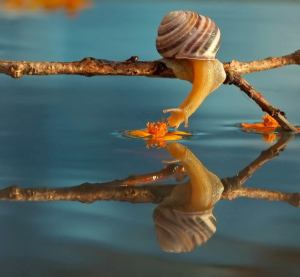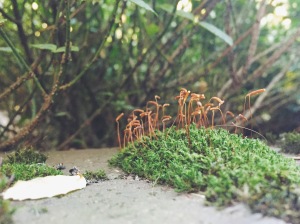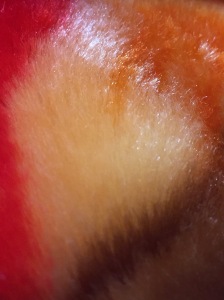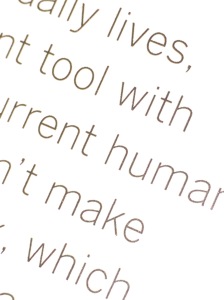To finish my final photo works, I did some research and tests before. Here are the material collections of my process about how my ideas was inspired, shaped and become into the final works. I put them together in to one blog for convenience, flow, tidy and clear to all.
From the beginning, I searched online and read books to get to know more about photography, especially post-photography. Influenced by our lectures, especially Gregory Crewdson was introduced, I got some misty feelings about it and a great interests on creating new forms. My first try was related to a photographer called Dan Holdsworth. Who doesn’t have any people in the photography, bring to the viewer a more direct experience of the nature world. He presents environment that are simultaneously pre- and post-human, to make a kind of like naive realism sense. As he said “When you place a figure in a landscape, you are playing with narrative- the viewer will then become interested in the story behind that figure. I am more interested in asking: Why are you here in front of the photography? And what does it mean to you? Bringing the audience a more direct experience of the landscape and the environment.” (Shore 2014:98)
Dan Holdsworth’s landscape
From above of his works, my favourite one is on the left, which looks cool and full of material feelings and aurae. Like between the abstract-realistic photography, using micro lens as a macro-photography of details. Even I know it’s a landscape. I started my first try about material feeling but didn’t know how to relate it to the theme of ‘Journey’. While afterwards influenced me about the basic thoughts on not to take photos with any live figures. 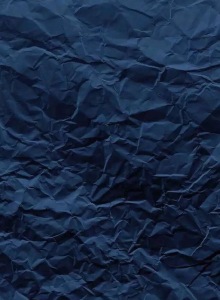
After a few weeks, when I searched for the micro lens, I found some lovely photos with good story but realised it’s too hard for me to set a figure to tell story. Even I tried my best to use my phone to take the ‘small world’ picture, I felt hard to create a good story telling which could have 10 or more pictures to make the background not just a background. I mean, The testing photos are not bad, but if I want to concentrate more on the theme ‘Journey’, it seems like theses are just nice backgrounds. If without a good tied photo’s link between a sets, to hold a strong story telling, it will be no meaning as I just took some nice pictures and force it with a dispensable theme. Even if I put an object as a figure to make a story, I still feel farfetched. Although I spent a lot of time but failed to create any good stories, so, I don’t like that. And this was my second try.
Vyacheslav Mishchenko’s macro photos of snails
- my
- second
- try
Then, I found a theme of photos which gave me the strongest feeling about fiction and real, that let me decided onto the type of focus micro lens firmly, as my final works skill. Because in this unique way, the tricky of a photo is more obvious, thus the boundary between fiction and real becomes blur without intentional fake edit. What the camera took is the real, but we can see another reality which seems fiction. Blow is the works of Suren Manvelyan, a photographer from Armenia. In addition to the identity of the photographer, he is a famous quantum physicist as well. This amazing group of people’s eye are very close range photography, “Your beautiful eyes”, showing the details of the iris and the pupil, like a universe or an abstract world. Manvelyan’s work is indeed very attractive, but he is still unwilling to share the skills.
Your beautiful eyes
Few days latter, I found a website showing variety of abstract photography, using various techniques to make the naive reality into different connotations. A good photographer can take an otherwise ordinary shot and turn it into a masterpiece of colors, patterns, and textures. And then I made my third try.
Astounding Examples of Abstract Photography (put your mouse on to see the name)
From then I came out an idea of making the visual feeling textures Journey, about an simple action or experience, that we could read some feelings from the material it self. Synaesthesia association with my individual personal experiences. With this in mind, I did some tests and this is the original drafts I made below. I think the topic of a period of time experiencing in a simple action will fits well. First, it’s not too difficult to achieve, second, its not hard to be understood. Get something familiar but private would be a good choice.
The third try
This time has made the rudiment of my final works. But I found out that it dosen’t looks perfect because I used an iphone, and the texture is more hard to capture, cause it might be the closest type that a phone camera could make. I spent a lot of time on adjusting and focus. The other day when I saw it again, I don’t think it’s strong enough, even I have designed the story in this style. It’s not possible for me to learn the better technique and skills in a short time, and I never wanna to use the SLR or DSLR camera to take photos, so I step into my next research and thinking about how to make sense.
As I want to make the kind of sense Journey, that I think could be sharing a really personal feeling, when people see the texture,they may constantly recall some of the feelings about the objects, and this is beyond the visual. What if my experience could be shared in a broader way? Because the process I chose is mostly a human’s activity, even the blind. What if I could also make the blind get my journey, or the viewers don’t need to open their eyes to read the picture as well? The process is the most essential part of the journey, that each picture could take the audience into an ongoing path to the ends. My destination is to get into my bad and sleep, so I chose some procedures of what I normally do before I fall asleep. The objects I use, and the things I could feel. Living as a normal human, you may not notice that feeling of the process much, or that strong, about how is the feeling when you did that. But in the blind people’s world, that means the whole, or, the way of perceiving. So try to do it without open your eyes, experiencing the normally neglected experience from your daily life, the stuff you’ve been doing for many many years, seems like a cool idea.
But I know this is only based on the topic of Journey, if the theme changes, I couldn’t make it sense in this way. But when it comes to Journey, I really like this creative style as a feeling of I am more like a post-photographer! Luckily, in the last few days, I found an photographer who is a blind, and what he made inspired me to reedit my work in a stronger way.
‘Brendon borellini, is an Australian photographer that was born with congenital deafness and partial blindness, which developed into complete blindness, but that hasn’t stopped him from discovering photography as a creative outlet. With the help of a special printer, Brenden can feel his photographs, learning about composition as he progresses. Here’s a few stills from the short documentary, showing the process.’ (Orms connect)
Then, by using this idea, I edited my pictures, tried many APPs to make it a bit line out the texture, to be more beautiful and seems like could be concavo-convex. Give them an intact experience, as the sharing feelings, through out my work. Hence, if print them out, both the blind and normal people could ‘read’ the picture to know my ‘journey to sleep’. If not to print, the form is stronger than the primary test ones. The journey should be connecting, fitting the aim of a story telling, not only one stands for one story, so they have to be in the process of starting from the beginning and going to the end. After I intensified the visual effect, I consider that this have helped to express my purpose better.
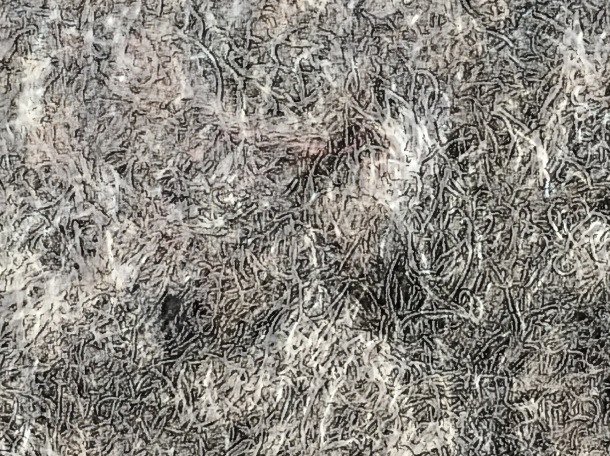
To check out the final whole works, please see the next blog.
Reference:
Shore, R. (2014) Post-photography, the artist with a camera. Oxford: Focal Press.
Pictures are from:
http://www.top13.net/pictures-of-snails
http://www.visualnews.com/2010/11/01/suren-manvelyan-eye-photography
http://www.thephotoargus.com/40-astounding-examples-of-abstract-photography
https://www.ormsdirect.co.za/blog/2014/07/24/how-blind-photographer-brenden-borellini-sees




